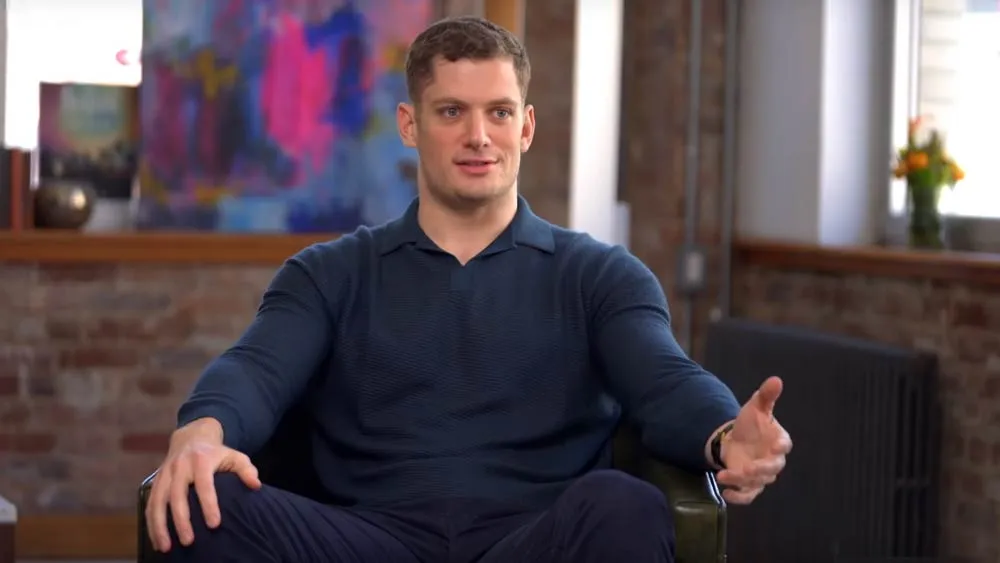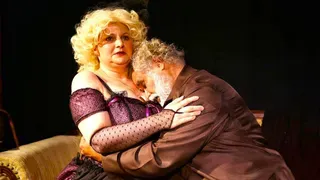May 26, 2013
Behind the Candelabra
Robert Nesti READ TIME: 5 MIN.
"It was hard to make fun of him," wrote the New York Times in its obituary of Liberace, "because he seemed to have so much fun making fun of himself." The entertainer - one of the highest paid during his lengthy career - was synonymous with a larger-than-life camp sensibility, something he developed early on when he chose to be a pop artist in the late 1940s, not a classical musician. He didn't want to play Carnegie Hall, he wanted to fly above the stage at Radio City Music Hall (which he did in 1986, a year before he died). His baroque persona made him a joke to many; but one that had him laughing all the way to the bank, as he did when a British newspaper accused him of being gay. He sued and won; incredible as it may seem in hindsight.
Incredible is also a good word to describe Michael Douglas's impersonation of him in Behind the Candelabra, Steven Soderbergh's biopic that was in development for years and only came to fruition when HBO picked it up. (It airs Sunday night at 9pm.) Douglas is mercurial as Liberace; a control freak so self-absorbed that he attempts to make his latest boy toy (Scott Thorson, played by Matt Damon) into a mirror image of himself.
He is a bizarro character worthy of a Pedro Almod�var movie; but what makes the film so resonant is how brilliantly his self-delusion is played. Soderbergh (working from a script Richard LaGravenese adapted from Thorson's memoir) tells a story of a gay man for whom the closet is a way of life. He's lived a lie so long that he begins to believe it; which Douglas conveys with just the right blend of over-the-top camp, ruthlessness and surprising vulnerability. Douglas strips away the facade and boldly reveals a pitiable monster - most tellingly when he's caught by Thorson without his wig, an emperor with no clothes. Their story is as sad as "Brokeback Mountain," just substitute chinchilla furs for cowboy hats.
Like that film, "Behind the Candelabra" tells the story of a relationship that is defined by its furtive nature. It begins in 1977 when the hunky, teenage Thorson is introduced to Liberace by a mutual friend (Scott Bakula) in a Vegas dressing room. It isn't long before the pianist's current protegee (played with icy aplomb by Cheyenne Jackson) gets his walking papers and Thorson becomes the object of Liberace's affection and largesse. The young man (17 in real-life) is ripe for the attention that Liberace pays him, despite a 40-year old difference in their ages; and much of their courtship is played for laughs, largely because of the gilded, Felliniesque world in which the entertainer lives and the way Soderbergh makes the audience a willing voyeur to this "Valley of the Dolls" scenario.
Because the story is told from Thorson's point-of-view, he's portrayed as not so much an opportunist (as this recent profile suggests) but as a victim of Liberace's voracious appetite for attention, which includes a darkly humorous episode when Thorson is forced to undergo facial reconstruction surgery to make him resemble an oil painting of the younger Liberace. When Thorson puts on weight, he's also put on a so-called "Hollywood diet" (largely methamphetamine) by an odious and very funny plastic surgeon who has taken his profession to creepy heights. That this Dr. Feelgood is played by unrecognizable Rob Lowe (one of the prettiest actors from the period the story takes place) only adds to the film's sly, surreal subtext.
Thorson's diet leads to drug addiction; and the relationship - tenuous as it is - unravels. Liberace turns his attention to a younger singer, while Thorson becomes more and more embittered, and addicted. Damon conveys this collapse with a remarkable intensity, both physically and emotionally. He's like Pinnochio on a bender; and, when evicted, retaliates by going public about the relationship, making the least-best-kept secret in show business fodder for the tabloids. Thorson's post-Liberace experience is never quite explored; but, from the looks of things, could make another movie or two dealing as it does with drug-related murders and his supposed involvement with the witness protection program. His book, published in 1988, outed Liberace; but the devout didn't want to believe. Tour guides at the Liberace Museum (a Vegas tourist site in a strip mall that closed in 2010) would tell patrons that the pianist wasn't "gay" and the relationship with Thorson was a misunderstanding. Even from beyond the grave, the Big Lie persisted.
Strangely the movie has you believing it as well, largely because of Michael Douglas's committed performance. He takes Liberace - in all his excess - seriously; and makes him sadly real. In the postscript, Thorson has a touching deathbed reconciliation with his ex, ravaged by AIDS. That Liberace attempted to hide what killed him with a false death report suggests that he wanted to control his image from beyond the grave; and it seems almost cruel that the truth be told. Liberace was his own greatest fiction - why muddle it with the truth?
In what he says is his final film, Soderbergh tells the story in a clipped, direct manner. Shooting in digital (Soderbergh is also the cameraman), he gives the story a v�rit� style that suits its sensational subject. As its title suggests, this is a peak behind the candelabra, and, while not all that pretty, is riveting to watch. There are effective cameos by Dan Aykroyd as his no-nonsense manager, Paul Rieser as Thorson's credulous lawyer and, best of all, a virtually unrecognizable Debbie Reynolds as Liberace's mother. With a prosthetic nose and a thick Polish accent, she adds to story's incredible level of denial. When she dies, an ambivalent Liberace says he's free; but, as this cautionary tale on fame, flamboyance and the closet suggests, he never would be.
Robert Nesti can be reached at [email protected].







